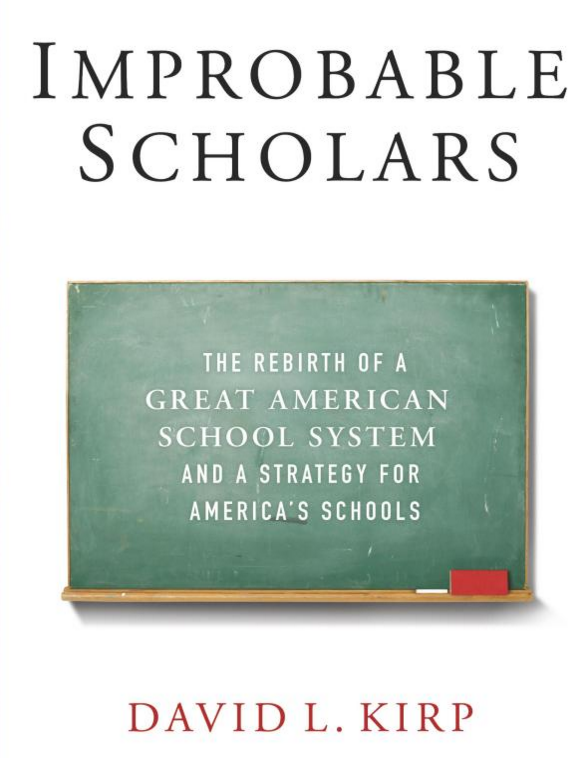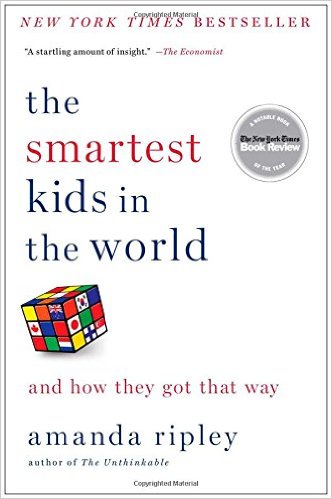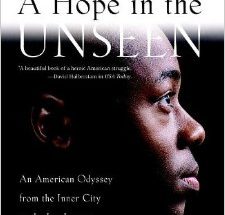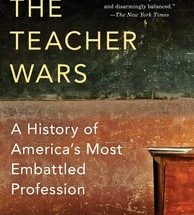When Union City, New Jersey schools were in desperate need of revitalization, the district administration came up with a few principles that David Kirp explores in his April 2013 book, Improbable Scholars. Money and political clout ranked high, and, luckily, they were readily available. But more important, Kirp wrote, was fostering a culture of respect and dedication amongst students and staff. While Union City has made great strides away from its reputation as a problem school district, Kirp emphasizes that it was not an overnight process, and that makes it a good example for school districts everywhere that can’t afford to start from scratch.
Union City is a historic town across the Hudson River from Manhattan that used to claim a major manufacturing sector and an abundance of blue-collar jobs. It’s been a starting point for waves of immigrants, most recently, those arriving from Cuba in the 1980s. Kirp emphasizes that these community connections, such as teachers who grew up in the neighborhood and share a language and an immigration history with their students, helped the district flourish. He writes from the schools out towards the city, discussing how the devoted mayor of Union City is the point of contact for the community for concerns about everything from slow police response times to help finding jobs. Whether this community core is replicable anywhere else is an unanswered question, although Kirp does his best to provide examples of other districts of different ethnic makeups throughout the country that have seen similar results through active involvement.
The most compelling parts of this book are Kirp’s excursions into various classrooms of all grades throughout Union City. He spends the most time with Alina Bossbaly’s group of third graders in order to illustrate how one outstanding, bilingual teacher can shape her own classroom and help her colleagues. He extolls the “Bossbaly-ization” of kids who come in as problem students or as English Language Learners and leave as role models.
It’s perhaps a counterintuitive approach in a book whose marketing lines say that not all teachers can be rockstars, but Kirp’s point seems to be that teachers who adopt new methods of teaching like open-ended discussion and group work can be replicated in any city. Kirp also emphasizes the importance of preschool education, and explores how model preschools differ from middling ones.
Although the content and conclusions of Improbable Scholars are intriguing, Kirp’s interrupted narrative often makes for repetitive passages, as if the author is welcoming his audience back from a commercial break. He leaves the narrative in Bossbaly’s classroom in the middle of the school year as he moves on to tell the Union City School District’s complicated administrative history, its preschool successes and its high school woes. He returns to Bossbaly’s classroom in perhaps a rush, to report on the penultimate third-grade testing scores.
The events Kirp chronicles in Improbable Scholars happened to take place around the same time as those in The Prize by Dale Russakoff, a more high-profile reform effort buoyed by an infusion of private money from Facebook founder Mark Zuckerburg and characterized by an agenda of shuttering district schools and replacing them with charters. The Union City approach, bolstering district schools, and building on community strengths, represented the polar opposite.
The comparisons and the differences throughout both the cities and the schools themselves are instructive. Where Newark’s “no-excuses” policies brought a rotating cadre of teachers who were inevitably fired for failing to raise test scores, Union City’s “spare-no-expensive” policies brought in coaches for struggling teachers at all levels. And while not all teachers took advantage of the coaching, those who did saw their students’ test scores improve. Union City’s emphasis is on the ensemble, not the prima donna, which Kirp explains using a rephrasing of Malcolm Gladwell’s infamous talent myth: “People come and go, but the organization endures.”




